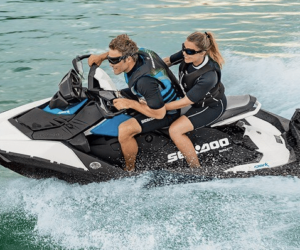Easy anchoring with a sailing yacht
Anchoring a sailing yacht is a basic skill that every sailor should master. Whether for a relaxing night in a quiet bay or a short break during a sailing trip – correct anchoring ensures safety and comfort. Here we explain in simple steps how to anchor your sailing yacht safely and effectively.

1. Preparation
Before you start anchoring, it is important to prepare thoroughly. It is important to know which anchor you are using. Depending on the anchor, they may be better suited to different bottom conditions. Check the weather conditions and tides to make sure the anchorage is safe. Also pay attention to the ground conditions, as they influence the holding power of your anchor.
Checklist:
- Check the weather forecast and tide calendar
- Using maps and GPS
- Know/observe soil conditions
2. The right anchorage
A good anchorage offers protection from wind and waves, sufficient depth and enough space for swinging (swinging the yacht around the anchor). Look for a quiet spot away from traffic and other boats. Please note that anchoring is not permitted everywhere. Restricted areas are marked on the charts and depending on the GPS version.
Ideal anchorages:
- Not in restricted zones
- Away from busy routes
- Pitches with sufficient depth and even ground conditions
3. The anchor manoeuvre
Once you have chosen the anchorage, approach it slowly against the wind or current. Prepare the anchor and anchor chain and make sure that they can run freely.
Step-by-step instructions:
- Travel slowly against the wind or current to the anchorage
- Lower the anchor slowly while the boat is travelling slightly backwards
- As soon as the anchor has reached the bottom, let out more chain, about 3-5 times the water depth
- Reverse to dig in the anchor and check its holding force
- Secure the anchor by remaining in position and checking the holding force
4. The anchor chain and the Schwojen
An important component of anchoring is the correct length of anchor chain. As a general rule, the length of the chain laid out should be at least 3 to 5 times the water depth. This ensures that the anchor lies flat on the bottom and provides maximum hold.
Length of chain:
- At a water depth of 5 metres: lay out at least 15 metres of chain
- At a water depth of 10 metres: lay out at least 30 metres
Swaying is the natural swinging of the boat around the anchor point. Make sure that there is enough space for the boat to swing safely without colliding with other boats or obstacles.
5. Securing and monitoring
After the anchor is set, check your position regularly to make sure the anchor is holding and the boat is not drifting. Use GPS and visual markers on land to monitor your position. An anchor alarm on the GPS device can also be helpful.
Our tips:
- Regularly use visual checkpoints on land
- GPS anchor alarm
- Keep an eye on weather changes
6. Anchor lights
When it’s time to raise the anchor, sail slowly forwards and haul in the chain. Once the anchor is free, rinse it to remove dirt and debris and stow it safely on board.
Steps:
- Drive forwards slowly and retract the chain
- As soon as the anchor is released from the bottom, pull it up and clean it
- Stow anchors safely
Our summary
Correct anchoring is an essential skill for every sailor. With careful preparation, choosing the right anchorage and precise execution of the anchoring manoeuvre, you can ensure that your sailing yacht is firmly and safely anchored. Follow these simple steps and enjoy relaxing hours on the water!
For specific instructions or even a skipper training session where we practise these skills, please get in touch.

















